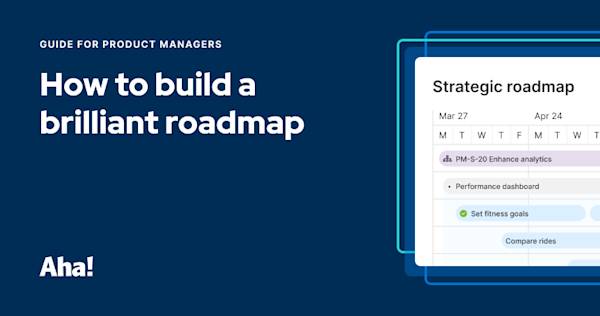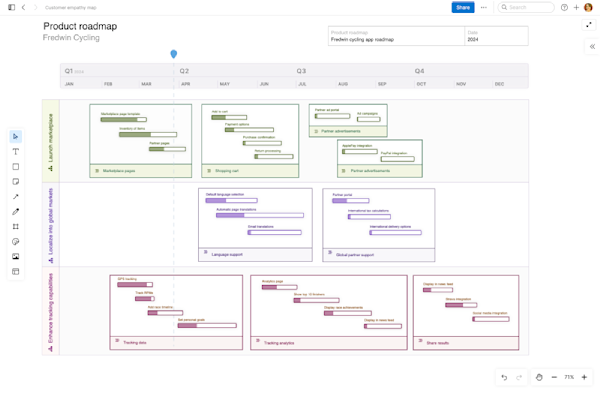Product development dictionary
One of the secrets of successful product managers? Daily commitment — to your work, team, and self-improvement. Solving customer problems requires an incredible breadth and depth of expertise. After all, daily activities can range from setting high-level strategy to defining detailed feature requirements. And you collaborate with a cross-functional product development team that includes folks from engineering, marketing, sales, support, and beyond. To accomplish your tasks, you will use classic tools such as a product development framework, product roadmaps, and a design platform.
We created this dictionary to help you quickly learn the most common product terms. You will also find links to related articles so you can deepen your understanding of core product development concepts.
A
acceptance criteria | Conditions of satisfaction used to determine whether a user story or feature achieves the desired outcome |
A collection of software development methodologies that support adaptive planning, evolutionary development, and continuous delivery. The first agile manifesto was published in 2001 and is the foundation of many agile methods teams use today. | |
Agile Manifesto | A foundational document for agile development that was published in 2001. It outlines 12 principles and four core values focused on prioritizing individuals, collaboration, working software, and responsiveness to change over traditional processes. |
Product management in an agile environment. Planning is done in iterations, allowing product and engineering to continuously adjust the near-term roadmap and meet customer needs. | |
A cross-functional agile team that incrementally develops, delivers, and, if applicable, operates solutions within a value stream—encompassing the products, services, and systems delivered to customers. As a core construct of the Scaled Agile Framework® (SAFe®), it aligns multiple agile teams around a shared mission and common deliverables. | |
A flexible product development model that blends upfront strategic planning with rapid delivery — helping organizations achieve value-first product development Related: | |
The process of monitoring how users engage with your product. Product analytics involves collecting data, tracking users' actions and metrics, and analyzing trends to inform product enhancements. | |
annual contract value | The average annual revenue received from a customer. SaaS companies use this metric to normalize subscription revenue from each contracted customer across a year. |
annual recurring revenue | Yearly revenue from new sales, renewals, and upgrades adjusted for downgrades and churn. This metric is used to track how much revenue a company can expect based on yearly subscriptions. |
application (software) | A software package (such as a product or program) that is designed so end users can perform a specific task |
application programming interface | A set of rules in an operating system used in software programs to communicate and facilitate interactions between systems |
B
A prioritized list of user stories or features for a product or service that are ready to be implemented | |
A prioritized list of user stories or features that the development team will work on during a sprint or iteration | |
The continuous process of organizing, refining, and prioritizing the product backlog to prepare for sprint planning | |
beta testing | A way to gather feedback on design, functionality, and usability from end users before a new product or feature becomes broadly available to customers |
blended agile | An approach that combines elements from multiple agile frameworks — such as Scaled Agile Framework® (SAFe®), scrum, and kanban — to create a customized methodology that meets a team or organization's unique needs. |
blocked | Indicates a problem with a work item that prohibits it from moving forward |
A chart that shows the amount of work completed per day against the amount of work remaining for a release or sprint. Work can be measured in time or story points. | |
business case | The business justification for implementing an initiative or feature that demonstrates the expected benefit. Benefits can include revenue potential, customer satisfaction, or cost savings. |
A framework for how a business will deliver value. A business model typically includes a high-level vision, key objectives, customer targets and challenges, solution, value, pricing, messaging, go-to-market channels, investment required, and growth opportunity. Related: | |
A template for developing new or capturing existing business models. It includes building blocks such as challenge, solution, value proposition, competitive advantage, key metrics, operating costs, and revenue streams. |


